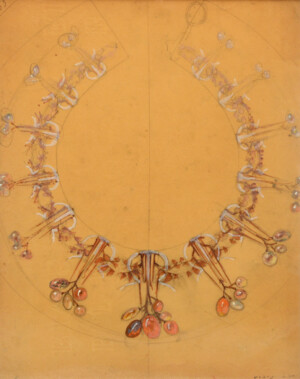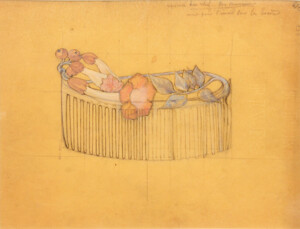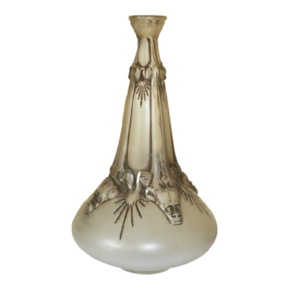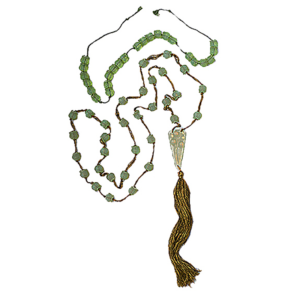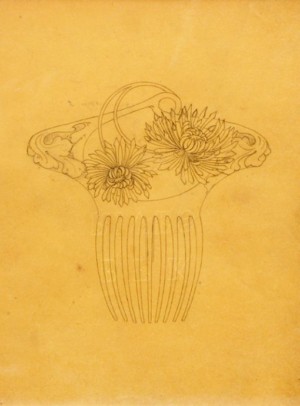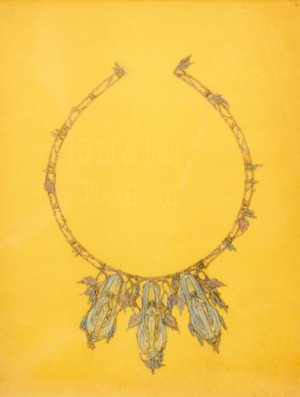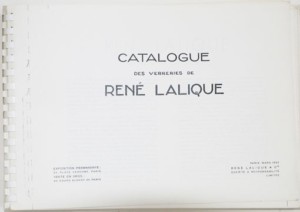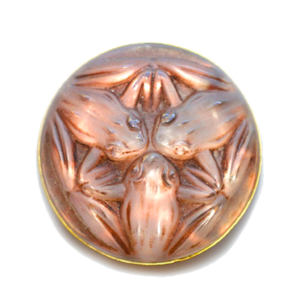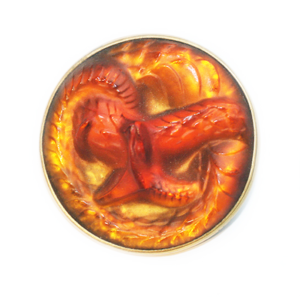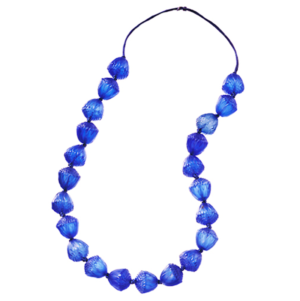René Lalique was one of the great design geniuses of the 20thcentury – a master artist, designer, jeweler, innovator, and glass maker.
Born on April 6, 1860 in rural Ay, France, René spent most of his childhood in Paris, but often retreated to the country to gain inspiration. Throughout his adolescence, Lalique was fascinated by nature, and studied flowers, plants, insects and other natural forms, and was a talented artist – he had even begun to sell paintings of flowers and insects when he was quite young. At the age of sixteen, he started an apprenticeship with the Paris jeweler Louis Aucoc. Lalique studied at the Ecole des Arts Décoratifs while completing his apprenticeship, and then went on to study draughtsmanship at Sydenham College, outside of London, for two years, beginning in 1878.
Lalique returned to Pairs in 1880 with the intention of become a leading jewelry designer. To this end, he began a detailed study of jewelry techniques. During this time, he also studied sculpture, and made his first designs for fabrics and wallpapers at the Ecole Bernard Palissy, under Justin Lequien.
Most of the early jewelry that Lalique created at this time was based on traditional diamond-set designs. He sold these pieces to major Parisian jewelry houses, including Aucoc, Boucheron, Cartier, and Destape. When Jules Destape retired in 1885, Lalique took over his workshop. This is when Lalique really began to utilize his creative and innovative genius, and began to experiment with creating jewelry of his own design.
Lalique’s approach to jewelry design was highly original in many ways. Perhaps the most important was his determination to create beautiful pieces without relying exclusively on expensive materials. He explored such materials as glass, horn, pearls, semi-precious stones, enamels, and ivory, and was more interested in how hw could use there materials, and what they could contribute to the beauty of the piece aesthetically than he was in intrinsic value. This made Lalique’s jewelry unique, and the pieces were true works of art.
Lalique, like many designers of the Art Nouveau period, was influenced by Japonism – the esthetic of Japanese art and design which had gained great popularity in Europe, but the main inspiration for his jewelry was the natural world, especially that of the French countryside that he so loved to explore.
In 1887, Lalique exhibited his jewelry at the Exposition Nationale des Arts Industriels in Paris. While his designs were beginning to be recognized as great works of art, and revolutionary in design and concept, many people were shocked, finding some of his designs disturbing and too realistic.
Lalique continued to experiment even more with enamel and cast and enameled glass elements, paving the way for his later Art Deco career as a great designer and manufacturer of glass vases, objects, and jewelry.
By 1890, Lalique was a well-known artist in the jewelry world in Paris, and in 1892, Lalique secured the patronage of Sarah Bernhardt, the famous actress. This immediately established him internationally as one of the best and most influential jewelry designers. Lalique won first prize at the Salon in Paris in 1897 for hair combs made from ivory and horn, and by 1900, Lalique exhibited not only jewelry, but also decorative arts that were made with bronze, ivory, and glass, at the Exposition Universelle in Paris. The exhibition at the 1900 Exposition Universelle in Paris attracted over 50 million viewers, and established Lalique as both a premier jewelry designer of the Art Nouveau movement, and a prominent figure in the decorative arts.
In 1905, Lalique opened his first retail store on the prestigious Place Vendôme in Paris, where he received royal patronage from Queen Alexandra. Queen Alexandra had modernized the style of dress for royalty, including the acceptance of daytime jewelry. One of the pieces that Lalique created for her was a gold triangular pendant, with two swans sitting on a lake of enamel, and set within a framework of a stylized swan, whose curved neck formed the attachment for a gold chain.
By the time René Lalique had established himself as “the inventor of modern jewelry,” according to Emile Galle, Lalique became even more interested in experimenting with glass – for jewelry as well as the decorative arts. In 1902, Lalique worked in a small workshop in Clairefontaine, and experimented with the “lost wax” process, which involved making a wax model, enclosing it in plaster, melting out the wax, and making a casting from the plaster mould. This workshop was open until 1912, even though Lalique also began working at Verrerie, a glassworks that he opened in Combs, in 1909.
Throughout the years before 1920, Lalique created a variety of pieces out of glass, including cachets, vases, ashtrays, tableware, car mascots, light fixtures, statues, perfume bottles and fountains. By creating these various, everyday objects out of glass, Lalique brought art to ordinary people. Even though the glass was manufactured in his workshop, post-manufacturing additions such as enameling, painting, frosting, bronze mountings and polishing were always used to create the most unique pieces. Additionally, Lalique had developed a glass that had exceptional qualities of brilliance and richness of color.
Verrerie proved to be so successful that it had to be expanded in 1918 at Wingen sur Moder. Some of Lalique’s most important and largest glass pieces were made at this factory. It was also the place where Lalique began combining glass and architecture. Lalique was the first artist to decorate glass in doors, windows, lampshades, houses, churches, and hotels.
In 1925, Lalique exhibited his decorative glassware at the 1925 Exposition des Art Décoratifs. His use of natural themes in his glass designs was amazingly varied – insects, flowers, leaves and other natural elements were cleverly adapted to his designs for vases, perfume bottles and other articles. The quality of the glass casting was exceptional, and the colors vibrant or subtle, depending on the piece. He would often produce one model in a variety of colors. This exhibition solidified his reputation as a genius in the manufacturing of decorative glassware, and also showed a shift in the style of his work. Instead of producing curved and linear designs, his work also began exhibiting the square and rectangular elements of the emerging Art Deco style, although he never fully abandoned the Art Nouveau traditions that made his work so recognizable.
In addition to his elaborate jewels in gold, enamels, stones and unusual materials, Lalique also produced beautiful jewelry in glass. For the brooches, he adopted a technique used in English Georgian jewelry – the brooches had closed backs of metal, with a layer of colored foil between the metal and the glass element that reflected light and added color, so that the piece seemed to shimmer in the light. He also made rings, long necklaces with floral or leaf elements strung on silk, sautoirs with a pendant depicting animals, insects or female figures, suspended from silk cord and finished with a silk tassel. Bracelets of nature-inspired or geometric glass elements cleverly strung on elastic to slide over the hand, short necklaces of interlocking elements – his inspiration seemed endless.
Lalique’s great jewelry pieces were complex in design, and drew on many subjects – landscapes , such as the famed Winter Scene pendant, which made use of enamels on glass or gold, female figures, often nudes, faces, women who were part human – part animal, such as a dragon fly, or the famed piece with serpents. No doubt, many of these pieces were also inspired by the Symbolist art movement. Animals, flowers, birds, insects, serpents were combined in fabulous jewels using many techniques – beautifully chased gold, translucent enamels, plique-á-jour, carved horn, ivory and other materials, and were often of very impressive size. Many of Lalique’s jewels were asymmetrical, adding even more drama and movement to the pieces. He designed complex necklaces with elements that graduated in size from the back to the front. The workmanship was superb – the designs revolutionary.
Calouste Gulbenkian was a very important figure in Lalique’s life. He was born in Turkey, the son of an Armenian oil baron, and educated in England. He was fabulously wealthy, and a great connoisseur of art. He and Lalique were friends for fifty years, and during this time, Gulbenkian acquired 80 of Lalique’s most important pieces, which he put on display in the museum he founded in Lisbon, Portugal, where they can still be seen. Lalique’s jewelry is also in many museums world-wide. His jewelry has been, and remains highly sought-after by collectors.
Throughout the 1930’s, Lalique began to mass produce his glass vases and other decorative glass pieces so that people of all social classes would be able to afford them. This continued until the Combs workshop was closed in 1937, with the outbreak of World War II.
René Lalique died on May 9, 1945. His son, Marc, re-opened the Lalique factory and introduced a new form of crystal glass, and the original formula that René had developed has been lost. The factory was then passed down to Marc’s daughter Marie-Claude. Lalique is still one of the world’s premier glass manufacturers and upholds the standards that were set by its founder, René Lalique.
Showing all 10 results
-
$8,500.00
-
$500,010,000.00


